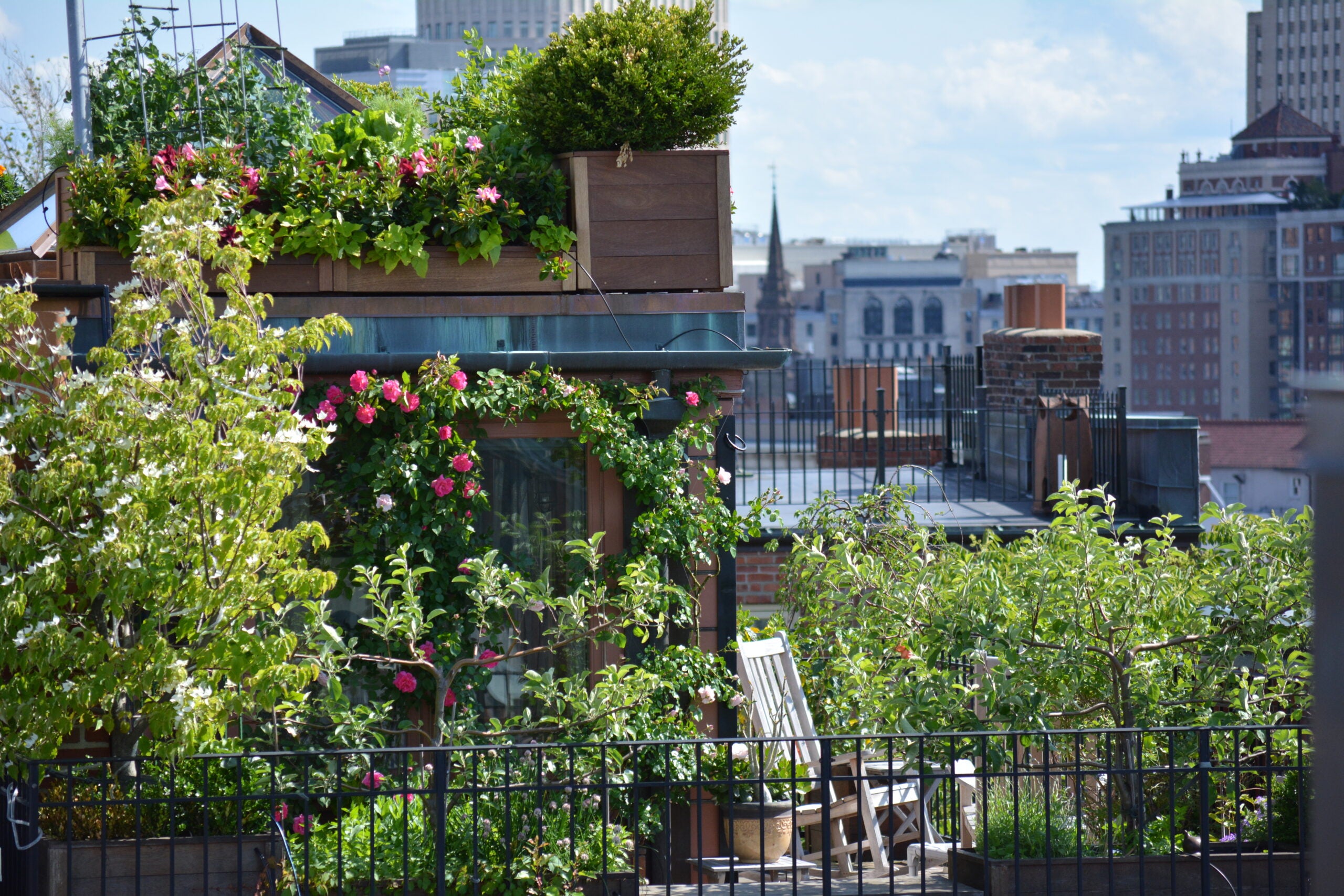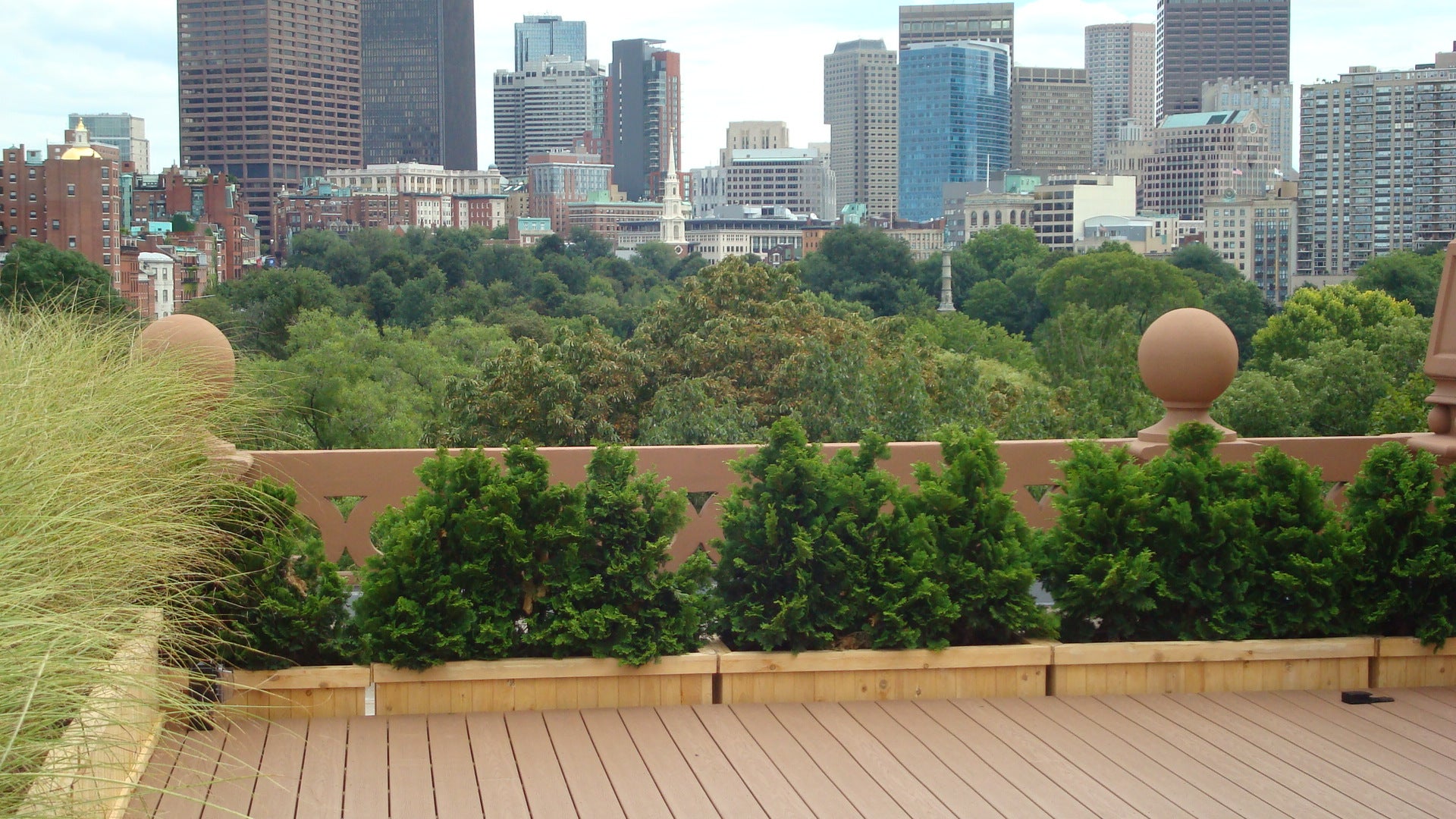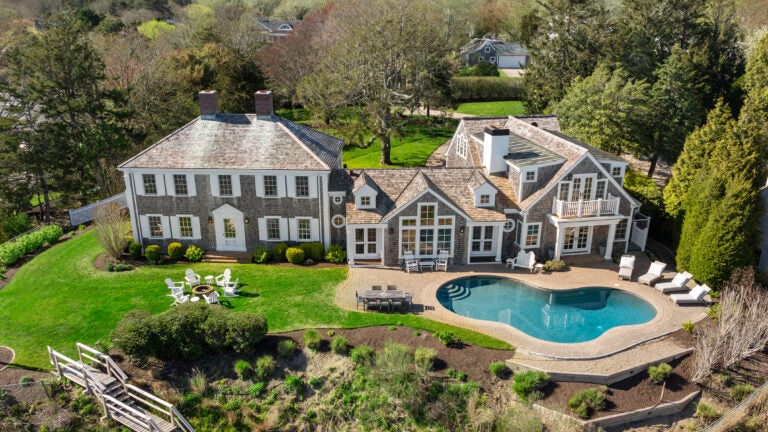Tips for creating a great rooftop garden
R. Wayne Mezitt, trustee chairman for the Massachusetts Horticultural Society at Elm Bank, offers advice on how to plan and plant a successful rooftop garden.

What’s new under the sun is actually really old.
Growing plants on rooftops has been practiced since ancient Babylonian times to beautify and take advantage of otherwise wasted spaces. Today’s environmental awareness and sustainability concerns have created a resurgence of interest, and in some parts of the world, rooftop plantings are mandatory on new buildings. As our society becomes increasingly crowded, utilizing these spaces is becoming an ever more practical opportunity.
Before constructing a rooftop garden, you’ll need to do your homework. A structural analysis by a professional engineer is a must to determine your roof’s capacity and suitability for supporting the additional weight of structures, soil, and plantings. You’ll also need to know about your roof covering’s moisture tolerance, slope, and drainage capacity; water availability; and how wastewater runoff will be managed. Most municipalities require adequate rooftop access and egress as well as appropriate edge barriers for safety. The results of this research will reveal what type of garden can be constructed on your roof. Should your roof lack the overall capacity for a full-scale garden, it might still be possible to grow plants on only those sections that accommodate them or even in movable pots.
Knowing your limitations, you can explore the types of plantings that make sense for you. There are generally two types of rooftop gardens: extensive and intensive.
Extensive rooftop plantings are designed primarily for functional uses like moderating building temperatures, rainwater capture, and crops. They generally need a 4-to-8-inch root-depth capacity and utilize a limited range of plants requiring minimal irrigation, nominal foot traffic, and periodic maintenance. This type of garden can also be called a “green roof’’ or “living roof’’ and is usually made up of low-growing plants that tolerate temperature fluctuations and inconsistent moisture.
Intensive rooftop plots are similar to ground-level gardens, with deeper root-growing than extensive plantings, but are designed for aesthetic, recreational, and functional uses. Simple intensive plantings are designed with movable or permanent pots or planters placed around the roof area. More complex designs include permanent planting areas filled with soil to support the growth of a variety of trees, shrubs, and flowering plants. Depending on their size, trees and shrubs typically need as much as 24 inches to support the plants and anchor them against wind and weather. Plan for a 10-to-18-inch root depth for low-growing shrubs, groundcovers, vegetables, herbs, and annuals.
Constructing a rooftop garden is always far more involved than creating one at ground level. Before you begin, you should understand the costs and constraints involved with installation. Some buildings allow sufficient roof access to bring up materials and plants using elevators or stairways. In others, these items must be lifted from outside the building using a ladder, pulleys, crane, or other method. Many garden structures can be laid out or preassembled before being brought to the roof, but some rooftop-garden designers and installers find it practical and economical to construct and plant in place.
Once you decide which type of garden is right for you, consult the experts to determine media (“engineered soil’’) composition, moisture-holding capacity, drainage, irrigation amounts and frequency, nutrient levels, and root-space needs for the plants you’ll be using. Ordinary garden-type soil is usually not an option; it’s too heavy and lacks the drainage capacity rooftop-garden plantings need. Because your garden is being installed on an impervious rooftop or roof deck, you’re essentially fashioning a container garden, albeit with a larger or wider “container’’ than what we generally envision. So unlike a ground-level garden, roots cannot anchor as firmly, and there’s no opportunity for the subsoil beneath your garden to accommodate deeper roots, absorb excess moisture, or moderate soil temperatures.
When you select plants, take into account their capacity to tolerate harsh wind exposure, weather extremes, and dehydrating conditions. Also consider any shade or reflecting light adjacent structures cast. Since they are aboveground, your ambient root-zone temperatures will ultimately equalize with the outside temperatures; this is a key concern for high soil temperatures in summer and root hardiness in winter.
I started to compile a list of plants that work well on Boston-area rooftops and soon realized there are too many options and not enough space in this story. Consider all categories: coniferous and broadleaf evergreens, deciduous trees and shrubs, groundcovers and vines, herbaceous perennials, annual flowers, vegetables, and herbs. Select appropriate plants by evaluating their year-round appeal, bloom sequence, flower colors, autumn foliage and fruit, architectural forms, shade-producing capacity, windbreak effect, tolerance to soil-moisture extremes, and expected life cycle, among other factors. Plants with fibrous root systems are most stable; trees and shrubs with thick-, waxy- or hairy-surfaced leaves tend to tolerate heavy wind exposure and resist dehydration. Avoid trees with large leaves that strong/buffeting winds can damage, “top-heavy’’ plants with small or weak root systems, and plants with twigs and branches that break easily.
Maintenance is yet another consideration, involving all aspects of watering (consider installing an automatic irrigation system), weed and pest management, pruning, removing leaf/fruit/twig debris, and winter care. Some plantings, including annuals, require frequent attention and periodic replenishment or replacement to keep the area attractive; others can be lower-maintenance.
Also be sure to factor in those extra features that will help make your rooftop garden a place you can enjoy frequently: paving, seating, tables, firepit/chimenea/barbecue, pergola, water feature, shade structure, wind barrier, and other elements. Be sure to check local building and fire code regulations first.
Anyway you look at it, designing and developing a rooftop garden is expensive. Your municipality may offer grants, tax incentives, or other benefits for certain types of rooftop installations. That’s worth investigating. Some buildings can benefit from enhanced LEED ratings as well.
Creating a rooftop garden is certainly a major endeavor not to be undertaken casually. But given the right conditions, an adequate budget, and thoughtful planning, the rewards can be well worth the investment both in terms of the environment and your personal enjoyment.







Wayne Mezitt is a third-generation nurseryman, a Massachusetts certified horticulturist, chairman of Weston Nurseries of Hopkinton and Chelmsford, trustee chairman for the Massachusetts Horticultural Society at Elm Bank, and owner of Hort-Sense, an advisory business. Send comments to [email protected].







Conversation
This discussion has ended. Please join elsewhere on Boston.com